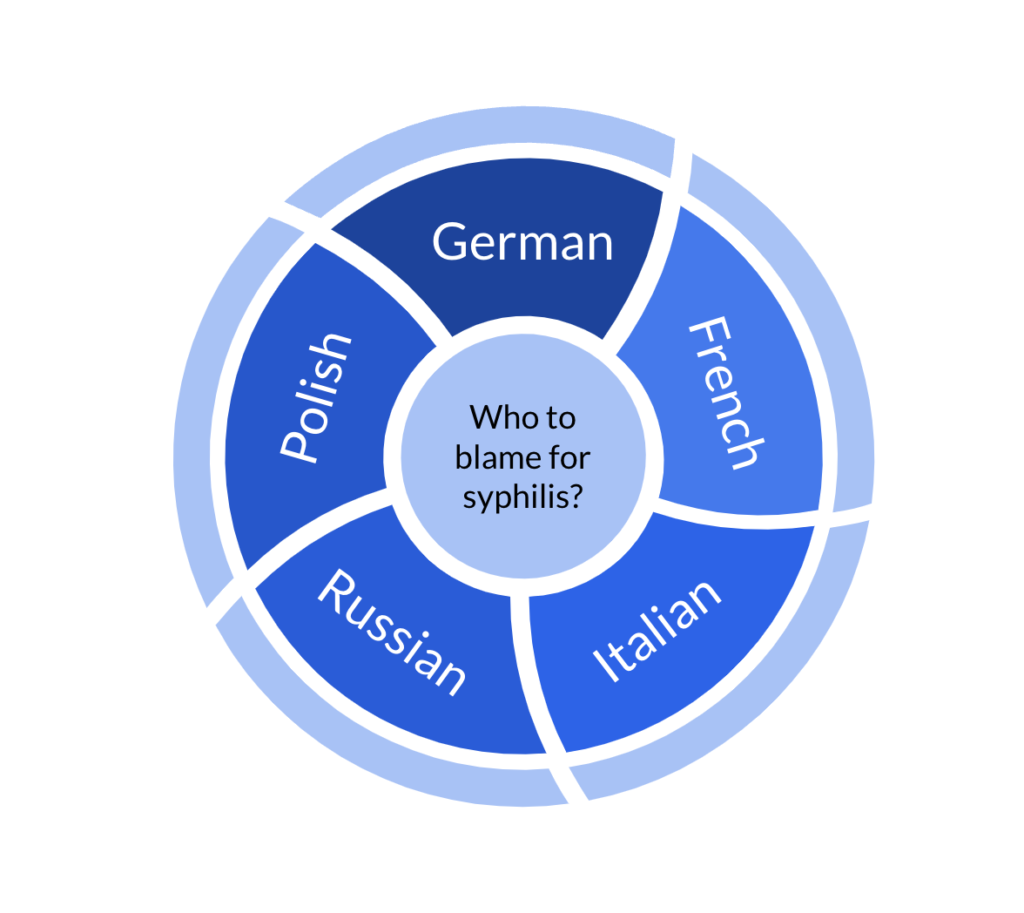During the 15th century, the Western world saw a widespread outbreak of syphilis. The Germans called it the “French disease,” the French called it the “Italian disease,” Italians called it the “Russian disease,” Russians called it the “Polish disease,” and the Polish called it the “German disease.” Though syphilis has no way of knowing someone’s nationality, it seems that, on the societal level, we have a tendency to alienate the sick and to deem infected individuals as “other.”

Though we have certainly changed our response to public health crises since the 15th century, our instinct to “otherize” diseases has remained. This instinct extends to some of our highest societal systems, including our governing bodies. As such, we see that disease is a social justice issue just as much as it is a health one.
Similarities with government response to HIV/AIDS and COVID-19
In both the HIV/AIDS and COVID-19 pandemic, government leaders tried to convince the nation that the disease was not an “us” problem, but a “them problem.” During her lecture, Sandra Thurman described government officials like Jesse Helms who, due to “religious” beliefs, refused to even mention homosexuality to the public. This posed a dangerous issue in which gay/bisexual men who were at the greatest risk for being exposed to HIV at the time did not obtain health knowledge on the disease. This stigma around sexuality and HIV/AIDS showed that homophobia and bias affected how our government responded to the virus.
Bias infected our response to COVID-19 as well. Frequently, former President Trump would refer to COVID-19 as a “Chinese virus” in the attempts to distance the disease from Americans. Through this racist rhetoric, he shifted the blame onto China. However, blaming another nation for a particular disease does not prevent United States citizens from dying from it.
The biased rhetoric of our government leaders in both the HIV/AIDS and COVID-19 pandemic slowed the spread of much-needed surveillance, prevention, treatment, and information to the nation while the spread of diseases accelerated. The sick– not the sickness– became the enemy.
Differences with government response to HIV/AIDS and COVID-19
While bias in the rhetoric of government officials were present in both pandemics, the timeline of response differs. Former President Reagan did not even reference HIV/AIDS in a speech until 4 years into the crisis. On the other hand, government officials and organizations like the CDC referred to COVID-19 as early as 2019. This is partly due to advents in communication. For example, platforms like Twitter made it easier for government officials to address their constituents. The response to the COVID-19 pandemic occurred closer to recognition of the disease than the response to HIV/AIDS pandemic.

Audrika – So well done! (and you went first – setting a high bar) I enjoyed reading this and agree with your statement, “The sick– not the sickness– became the enemy.”
Hi Audrika,
You made some great points! I feel like monkeypox also perfectly fits these patterns. We have already seen Monkeypox start to become stigmatized to affect gay men. Even if the disease does not discriminate, people do.
Similarly, the US has managed to mobilize even quicker for getting tests and vaccines for monkeypox. Perhaps this is due to the lessons learned from the COVID response being so fresh in our minds and the Biden administration, which is more willing to quickly and efficiently move with public health measures than the Trump administration.
Hello Audrika, excellent blog post! Society has indeed described COVID-19 as a ‘Chinese virus,’ but it also discussed each variant of the virus by ascribing it to a country (ex: ‘South African variant,’ ‘Indian variant,’ etc.), which is undoubtedly startling to me! Suppose social media did exist during the Reagan administration—do you think President Reagan would have still been able to not utter the terms ‘HIV ‘or ‘AIDS’ for four years? Though social media can be extremely exhausting, it is comforting to know that individuals can easily increase awareness of various causes now (albeit sometimes with misinformation…).
Yes, great post Audrika! I too, wonder what AIDS activism would have looked like had there been Twitter, Facebook, etc. Not only would it have been a way to circulate information and put pressure on politicians and policy makers, it would have also been a QUICK way to gather people together and have global conversations. But, as Sreyas points out, it would also be a great way to spread misinformation.